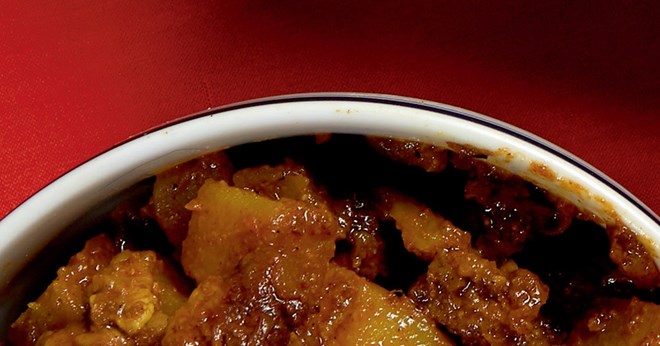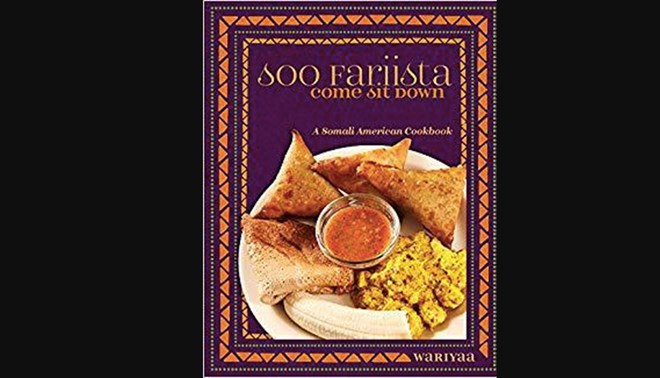
Wednesday August 1, 2018
By BETH DOOLEY
This cookbook is the first in this country to focus on Somali cuisine. 
For the nine young authors of “Soo Fariista/ Come Sit Down: A Somali American Cookbook”
(Minnesota Historical Society Press, 183 pages, $24.95), who are part
of Wariyaa, Somali Youth in Museums, cinnamon-spiced lamb and
lime-infused semolina cake is the taste of home.
This colorful, enticing book is the result of a yearlong program for Somali teens offered by the Somali Museum of Minnesota (1516 E. Lake St., Suite 11, Mpls., 612-234-1625; somalimuseum.org).
“Food is a tool to touch history and identity,” writes Osman Mohamed Ali, the museum’s founder and executive director. The youth — Abdirahman, Abdikarim, Abdiwahid, Asha, Hamdi, Hamse, Hamze, Hoda, Naima — found their way here from Syria, Ethiopia, South Africa, Kenya and Somalia, and became friends through this project as they explored kackac, bur and halwad (tea, beignets and sweets).
“We baked, cooked, fried and learned together ... struggled to make sense of recipes with missing information, to navigate the ever-present ‘just a pinch’ measurement system, to assess the authenticity of the recipes with our palates,” they write.
Here are recipes intertwined with tradition and adaptation.
“One cannot eat Somali spaghetti without understanding that the Italian colonizers brought pasta with them, or jabaati [curry] without remembering that the British brought Indian cuisine with them — and at the same time appreciate that Somalis incorporated their own spices and techniques into these dishes.”
The
recipes reflect the Somali experience in Minnesota, with locally grown
vegetables, meats, poultry, fish and rice dishes redolent with warming
spices cardamom, cinnamon, curry, cumin, coriander — and sparked with
garlic, chile and lime.
The book begins with a collection of traditional holiday favorites — abundant stews, celebratory breads and delicate desserts, many with multilayered steps that require multiple hands. Find fried pastries filled with spiced beef, cardamom-scented flatbread and crystallized pastry shells. The chapters that follow for breads, meat, sides and sauces, drinks and desserts carry recipes for more accessible, simple everyday fare.
The book was published in conjunction with the “Somalis + Minnesota” exhibit at the Minnesota History Center (345 W. Kellogg Blvd., St. Paul, 651-259-3000, mnhs.org/historycenter) that will run through June 2019.

The exhibit tells the story of Somali culture, from traditional life in Africa through the massive migration that began in the 1990s to today’s large, well-established Minnesota community. Reading the stories of each contributor and the notes on the recipes and touring the exhibit is an introduction to the people, the history and culture of hospitality that defines Somali identity.